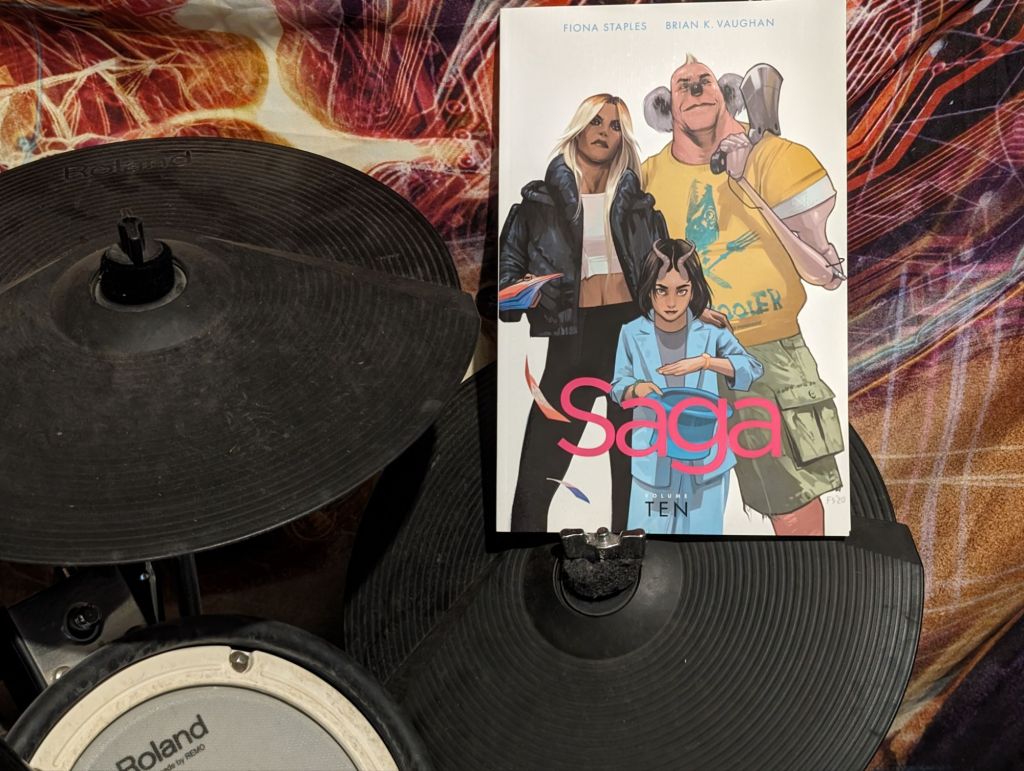Epic fantasy and science fiction graphic novel series
After quite a long hiatus, this series is back! If you haven’t read it before, my review of Volume 1 is here. I was quite excited to read it for my Short Stack Reading Challenge and ordered myself a copy to arrive just in time.

“Saga Volume Ten” by Brian K. Vaughan and illustrated by Fiona Staples is a comic book that picks up some years after the events of the previous volume. Narrator Hazel is now ten years old and is living on the treehouse spaceship with her mother Alana, adopted brother Squire and newcomer Bombazine. Eking out a living on the fringes, Alana hopes to “go legit” but when they cross paths with a pirate ship with two kids who shouldn’t exist, things absolutely do not go to plan.
This series is back with a vengeance and the decision to place it on hiatus was an excellent one. This volume felt fresh and re-energised with familiar old characters, fun new characters and high stakes. The book continues on with the familiar themes of war and identity, while more deeply examining the complex ideas of family, home and grief. The artwork is as dynamic as ever and the story flowed really well from page to page.
I think the only thing that annoyed me a bit was that despite ten years having passed since the events of Volume 1, Alana just hasn’t seemed to have aged at all. There is one point where she bares her breasts at the beginning of the book in protest about patriarchy and breastfeeding, and there is nary a droop nor a stretch-mark to be seen. Sure Alana may have a “perfect” body as the mother of a ten year old, but I felt like as a series purporting to outrage and challenge stereotypes, it could have been a good opportunity to show a bit of vulnerability and reality rather than simply sexualising Alana further. Bizarrely, when Alana consults a wolf-woman later in the book about cosmetic surgery, the wolf-woman has much more realistic breasts (notwithstanding that there are six of them).
Anyway, a fun addition to a long-running series that maybe isn’t as radical as it is trying to be.











